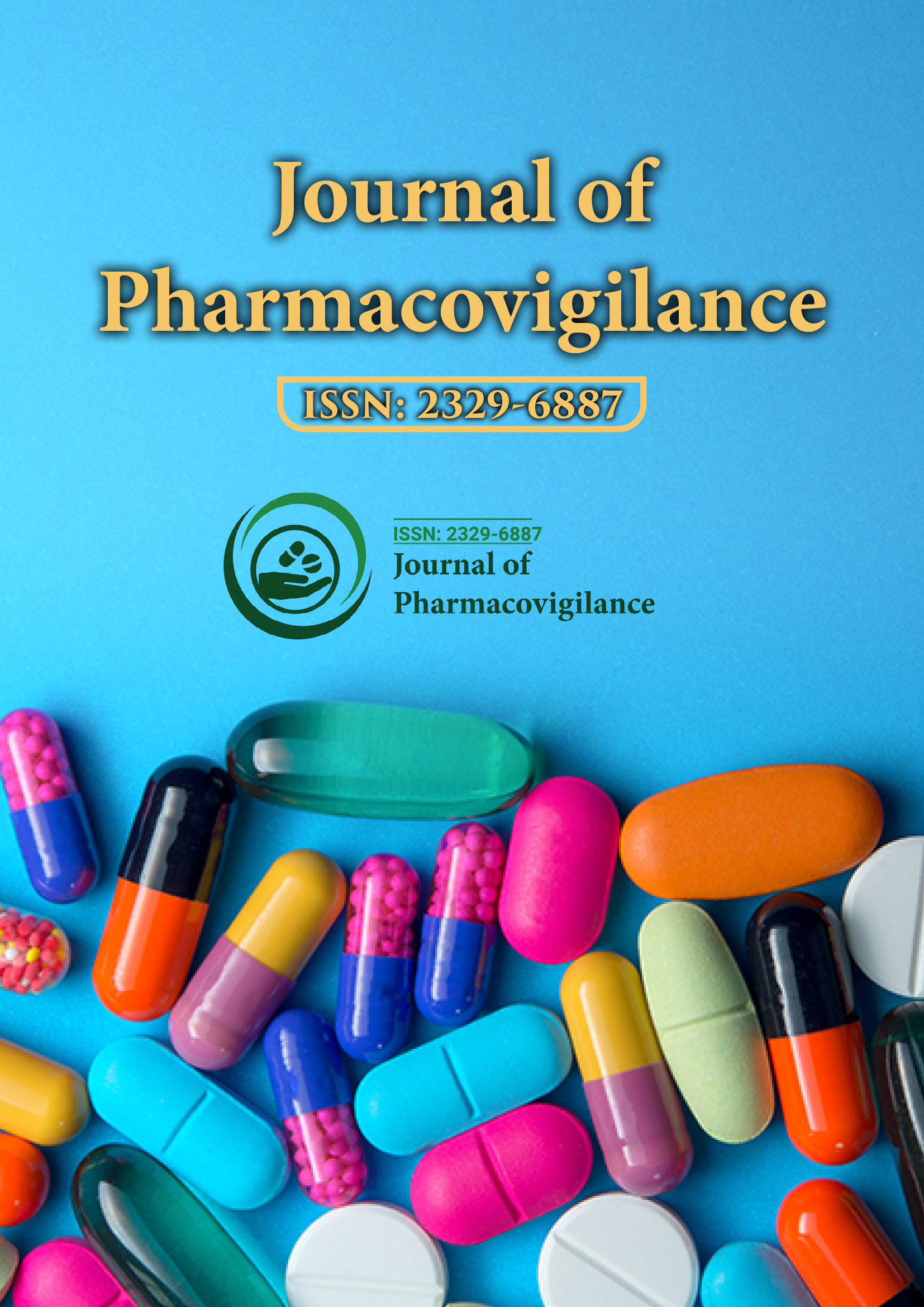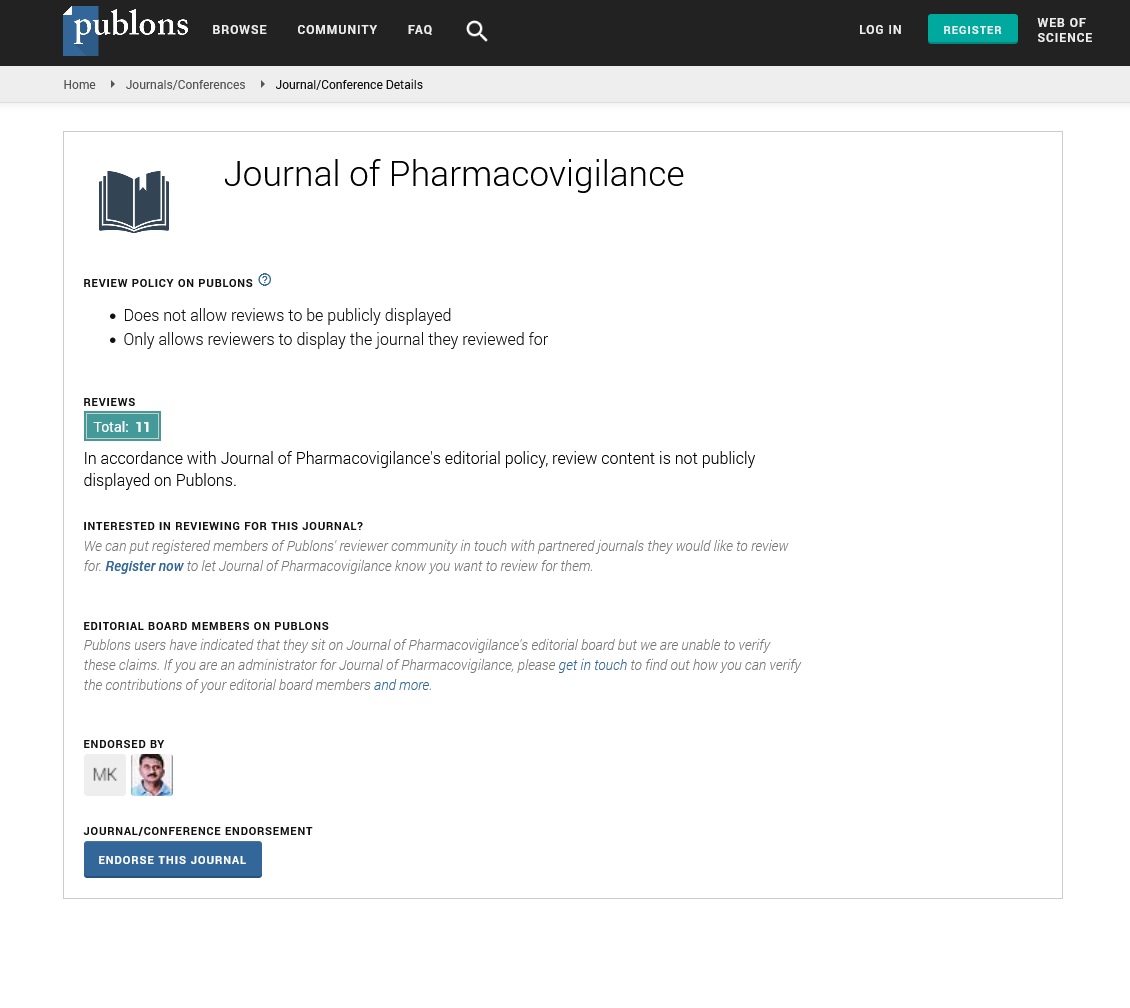Indexed In
- Open J Gate
- JournalTOCs
- The Global Impact Factor (GIF)
- RefSeek
- Hamdard University
- EBSCO A-Z
- OCLC- WorldCat
- Publons
- Euro Pub
- Google Scholar
Useful Links
Share This Page
Journal Flyer

Open Access Journals
- Agri and Aquaculture
- Biochemistry
- Bioinformatics & Systems Biology
- Business & Management
- Chemistry
- Clinical Sciences
- Engineering
- Food & Nutrition
- General Science
- Genetics & Molecular Biology
- Immunology & Microbiology
- Medical Sciences
- Neuroscience & Psychology
- Nursing & Health Care
- Pharmaceutical Sciences
Perspective - (2021) Volume 9, Issue 7
A Note on Toxicity Due to Medicinal Plants in Children
Sailesh Yadav*Received: 09-Jul-2021 Published: 30-Jul-2021, DOI: 10.35248/2329-6887.21.9.328
Introduction
For a long time, therapeutic plants and home grown treatment have been generally utilized in various social orders for the treatment of different infections. Other than their helpful power, a portion of the restorative plants have solid harmfulness in human, particularly in youngsters and older. In spite of normal convictions that regular items are protected, there have been not many reports on their poison levels.
As far as avoidance and treatment of illnesses, therapeutic plans are of specific significance in medication. Given the significance of these plants in medication, broad investigates have been acted lately to extricate and describe dynamic results of natural medication. Demonstrated useful impacts of these plants, modest and low cost, and similarity with the climate are the main reasons of utilizing therapeutic plants. The consequences of studies have shown that some dynamic elements of restorative plants are valuable for help with discomfort. Discoveries have likewise shown that some restorative spices have cancer prevention agent and mitigating impacts in vitro. Also, some restorative plants are generally utilized for various remedial purposes including treatment of gastrointestinal plot and stomach related infections brought about by microbial tainting [1]. In such manner, different native restorative plants, for example, Cassia siamea, Flueggea virosa, Terminalia bellirica, and Terminalia chebula are utilized in various networks for the treatment of specific sicknesses like jungle fever and gastrointestinal infection or as cure in babies and youngsters. It is assessed that near 80% of individuals in various networks utilize various sorts of conventional medication for the treatment of different illness. These days, the utilization of normal cures even in created nations has become predominant and these home grown items are regularly utilized in 18% of pediatrics establishments and 94% of different networks in Canada just for the treatment of different illness in kids.
Albeit a large portion of therapeutic plants have customarily been viewed as protected, numerous reports and clinical information exhibited that persistent utilization of these plants might be related with respiratory, ongoing liver injury, and sometimes liver disappointment [2]. Clinical reports have shown that some natural items like Jin Bu Huan, a Chinese home grown cure, can cause perilous manifestations like bradycardia and respiratory and CNS misery in the clients. As per a 10-year review investigation of legal post-mortem examination cases, it is assessed that close to 7% of harming passings in China are because of the utilization of noxious plants. Therapeutic plants and home grown cures, for example, Thespesia acutiloba and Bersama abyssinica are as of now utilized in South African for the treatment of different illnesses, particularly to battle pediatric diseases. Toxicological investigations have shown that the vast majority of these plant removes have solid cytotoxicity and in this way can't be considered as suitable pediatric cures. Other toxicological appraisals have shown that a few plants, for example, Pelargonium sidoides, Salvia officinalis, Datura stramonium, and eucalyptus can be hepatotoxic, epileptogenic, and psychedelic, and utilization of any piece of these plants may bring about hepatotoxicity, seizures, and serious intense anticholinergic harming, separately. Besides, it is accounted for that demise can happen from respiratory disappointment in Salvia officinalis harming [3].
Because of youthful metabolic compound framework, kids and newborn children can be more helpless to the poisonous and results of these plants. Studies on some restorative plants show that the majority of these natural items are contraindicated during pregnancy and early age, and surprisingly a portion of these items can cause early termination, contraception, or serious inebriation. Albeit the outcomes show that home grown inebriation happens in all age gatherings, youngsters as a delicate gatherings are more defenseless to intense plant harming. Inebriation with plant poisons is a worldwide medical problem particularly in touchy age gatherings. Many case reports have portrayed the harmfulness of restorative plants in human, especially in pediatric patients [4]. Discoveries show that youngsters matured under 13 years involves the larger part (69.8%) of cases inebriated with noxious plant. In addition, it is accounted for that about 60% of intense harming happens in kids more youthful than 20 years in Botswana and South Africa. Reports have likewise exhibited that ingestion of Jatropha curcas seeds or natural products is a significant reason for intense plant harming in Thailand and Paris, and Manihot esculenta is the most well-known reason for death in kids in Thailand. Cyanide and salicylate poisonousness has additionally been accounted for from ingestion of apricot seeds and Gaultheria species, individually, and a large number of these inebriated patients require serious consideration treatment. The aftereffects of a 5-year review study have shown that of 867 plant-inebriated pediatric patients, 260 cases were because of apricot seed harming [5].
Discoveries have exhibited that albeit home grown and conventional prescriptions may cause less incidental effects in examination with engineered drugs, therapeutic plants may extensively add to intense harming occurrences in kids even with deadly results. A significant number of these plants have some dynamic parts that may cause incidental effects or unfavorable response with synapses or different meds; henceforth, the utilization of home grown cures needs safety measure essentially in specific sicknesses or during pregnancy and breastfeeding. The consequences of this review and different examinations recommend that unfavorable responses of home grown drugs could be stayed away from by controlling the characterized portion and furthermore forestalling self-medicine.
REFERENCES
- Sofowora A, Ogunbodede E, Onayade A. The role and place of medicinal plants in the strategies for disease prevention. Afr J Tradit Complement Altern Med. 2013;10(5):210-229.
- Tiwari S. CARROT–A potent cancer curing natural medicine. J Nat Prod. 2016;9(4).
- Braun L, Cohen M. Herbs and natural supplements, volume 2: An evidence-based guide. Elsevier Health Sciences; 2015; 30.
- Song Q, Yang W, Meng Z, Wang J. Protocol for a systematic review and meta-analysis of Kang-ai injection for patients with oesophageal cancer. Med. 2020;99(36).
- Mootoosamy A, Mahomoodally MF. Ethnomedicinal application of native remedies used against diabetes and related complications in Mauritius. J Ethnopharmacol. 2014;151(1):413-444.
Citation: Yadav S (2021) A Note on Toxicity Due to Medicinal Plants in Children. J. Pharamacovigil. 9:328. doi-10.35248/2329-6887.21.9.328
Copyright: ©2021 Yadav S. This is an open-access article distributed under the terms of the Creative Commons Attribution License, which permits unrestricted use, distribution, and reproduction in any medium, provided the original author and source are credited

